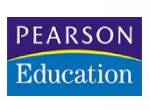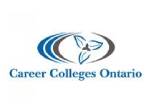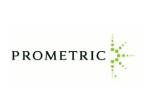Post Graduate Certification in Advanced Patient Care Management
( PGCAPCM )
❖ Assistive Devices
Learning Objectives
At the end of this course, the learner will be able to:
1. Assess the client for actual/potential difficulty with communication and speech/vision/hearing problems
2. Assess the client's use of assistive devices (e.g., prosthetic limbs, hearing aid)
3. Assist client to compensate for a physical or sensory impairment (e.g., assistive devices,positioning, compensatory techniques)
4. Manage the client who uses assistive devices or prostheses (e.g., eating utensils,telecommunication devices, dentures)
5. Evaluate the correct use of assistive devices by the client
❖ Elimination
Learning Objectives
At the end of this course, the learner will be able to:
1. Assess and manage a client with an alteration in elimination
2. Perform irrigations (e.g., of the bladder, ear, eye)
3. Provide skincare to incontinent clients (e.g., wash frequently, barrier creams/ointments)
4. Use alternative methods to promote voiding
5. Evaluate whether the client's ability to eliminate is restored/maintained
❖ Nutrition and Oral Hydration
Learning Objectives
At the end of this course, the learner will be able to:
1. Assess client ability to eat (e.g., chew, swallow)
2. Assess client for actual/potential specific food and medication interactions
3. Consider client choices regarding meeting nutritional requirements and maintaining dietary restrictions, including mention of specific food items
4. Monitor client hydration status (e.g., edema, signs and symptoms of dehydration)
5. Initiate calorie counts for clients6. Apply knowledge of mathematics to client nutrition (e.g., body mass index)
7. Monitor the client's nutritional status
8. Promote the client's independence in eating
9. Provide/maintain special diets based on the client diagnosis/nutritional needs and cultural considerations (e.g., low sodium, high protein, calorie restrictions)
10. Provide nutritional supplements as needed (e.g., high protein drinks)
11. Provide client nutrition through tube feedings
12. Evaluate side effects of client tube feedings and intervene as needed (e.g., diarrhea, dehydration)
13. Evaluate client intake and output and intervene as needed
14. Evaluate the impact of disease/illness on the nutritional status of a client
❖ Personal Hygiene
Learning Objectives
At the end of this course, the learner will be able to:
1. Assess the client for personal hygiene habits/routine
2. Assess and intervene in client performance of activities of daily living
3. Provide information to the client on required adaptations for performing activities of daily living (e.g., shower chair, handrails)
4. Perform post-mortem care
❖ Rest and sleep
Learning Objectives
At the end of this course, the learner will be able to:
1. Assess client sleep/rest pattern and intervene as needed
2. Apply knowledge of client pathophysiology to rest and sleep interventions
3. Schedule client care activities to promote adequate rest
❖ Changes/abnormalities in Vital signs
Learning Objectives
At the end of this course, the learner will be able to:
1. Assess and respond to changes and trends in vital client signs
2. Apply knowledge needed to perform related nursing procedures and psychomotor skills when assessing vital signs
3. Apply knowledge of client pathophysiology when measuring vital signs
❖ Diagnostic Tests
Learning Objectives
At the end of this course, the learner will be able to:
1. Apply knowledge of related nursing procedures and psychomotor skills when caring for clients undergoing diagnostic testing
2. Compare client diagnostic findings with pre-test results
3. Perform diagnostic testing (e.g., electrocardiogram, oxygen saturation, glucose monitoring)
4. Perform fetal heart monitoring
5. Monitor results of maternal and fetal diagnostic tests (e.g., non-stress test, amniocentesis, ultrasound)
6. Monitor the results of diagnostic testing and intervene as needed
AFFILIATED PARTNERS





